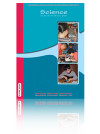In 2007, the first year of the fourth cycle of national monitoring, three areas were assessed: science, art, and the use of graphs, tables and maps. This report presents details and results of the assessments in science.
The aims of a science education include the development of knowledge and understanding, skills of scientific investigation, and attitudes on which such investigation depends. A framework for science education and its assessment is presented in Chapter 2. This framework highlights the four main content strands of the science curriculum (the living world, physical world, material world, and planet Earth and beyond) and also indicates important scientific approaches, skills and attitudes.
Most students responded with considerable enthusiasm to tasks involving hands-on experimentation, as individuals or as teams. Their enthusiasm for tasks exploring knowledge and understanding of scientific phenomena and concepts was lower on average, but varied considerably depending on the particular task.
New Zealand’s National Education Monitoring Project commenced in 1993, with the task of assessing and reporting on the achievement of New Zealand primary school children in all areas of the school curriculum. Children are assessed at two class levels: year 4 (halfway through primary education) and year 8 (at the end of primary education). Different curriculum areas and skills are assessed each year, over a four-year cycle. The main goal of national monitoring is to provide detailed information about what children know, think and can do, so that patterns of performance can be recognised, successes celebrated, and desirable changes to educational practices and resources identified and implemented.
Each year, random samples of children are selected nationally, then assessed in their own schools by teachers specially seconded and trained for this work. Task instructions are given orally by teachers, through video presentations, on laptop computers, or in writing. Many of the assessment tasks involve the children in the use of equipment and materials. Their responses are presented orally, by demonstration, in writing, in computer files, or through other physical products. Many of the responses are recorded on videotape for subsequent analysis.
Key Results
An indication of overall trends in performance across the four-year period between 2003 and 2007 can be obtained by looking at the patterns of change across the trend tasks for all four of the curriculum strands. Averaged across 240 components of the year 4 trend tasks, 2% fewer students succeeded in 2007 than in 2003. Averaged across 274 components of the year 8 trend tasks, 1% fewer students succeeded in 2007 than in 2003.
The 2003 science report reported trends between 1999 and 2003, with an average decline over that four-year period of 1% on year 4 trend task components, and a gain of 2% on year 8 trend task components.
The 1999 science report reported trends between 1995 and 1999, with an average gain over that four-year period of 1% on year 4 trend task components, but no change on year 8 trend task components.
Taken together, these three sets of trend results suggest little change in science performance overall, for either year 4 or year 8 students, for the 12 year period from 1995 to 2007. However, a more detailed look suggests some concern for year 4 students. In the two assessment cycles since 1999, the performance of year 4 students on trend tasks has dropped twice by 3% in the physical world strand, by 2% and then 3% in the material world strand, and by an average of 1% per cycle in the other two strands. The significant declines for year 4 students in the physical and material world strands, which on average included tasks that were very popular with students, may be related to the evidence from the 2007 science survey that year 4 students were sensing a lack of science activities at school, and particularly a lack of “really good things” such as experiments and research/projects. This may reflect, in particular, diminished time spent on science related to the physical and material worlds.

